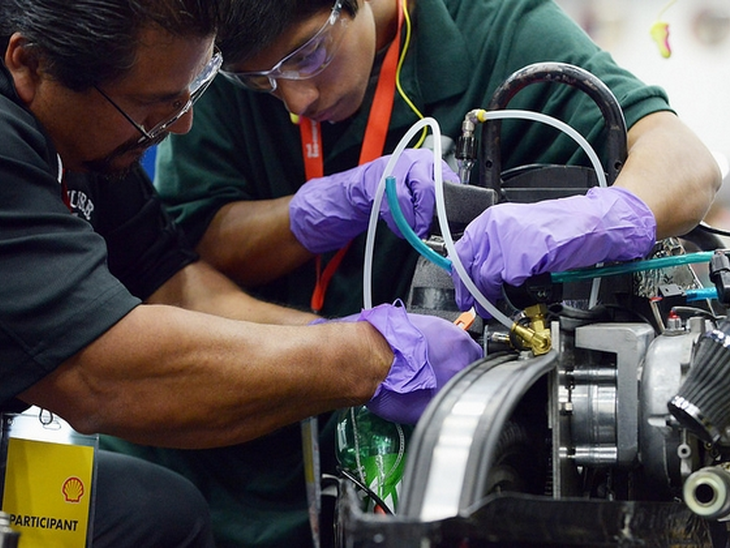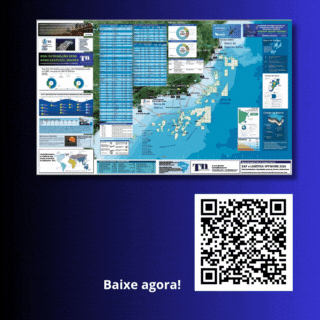Shell Eco-marathon Americas begins today in Houston
Five brazilian universities are participating
Shell25/04/2014 14:45

Thursday has been a day of energy, activity and enthusiasm building throughout the Shell Eco-marathon Americas complex in downtown Houston. At the epicenter of it all is the huge convention center hall filling with students, cars and high hopes for the weekend’s fuel efficiency races. Truck and trailers queued around the George Brown Convention Center before dawn, waiting to unload more than 1,000 students’ cars and dreams into some 8 acres of waiting space. The cavernous room is subdivided with low curtains into 126 individual “garage” areas, each with room for a car, spare parts, tools and the team members.
Unloading marked an end to days of anxiety for the SuperMileage team from Cal-Poly in San Luis Obispo, California. Team captain Sean Michel says it was the first time they’d shipped the car: “We were imagining a worst-case scenario,” he said, “like the fuel cells colliding and setting the car on fire along with our sleeping bags.” Luckily “Lamina III” arrived in one piece. The team started working feverishly, preparing for tech inspection.
After sleeping at the airport, a bleary eyed team from Goshen High School in Indiana came early to unload. Their two cars ran perfectly at a fun run test before shipping. Once inside, the students shook off any sleepiness and dived into making sure they still do. Two more high school teams, from Durand, Wisconsin, drove 24 hours pulling their cars in trailers, and, despite little sleep, immediately started working to race this weekend.
It’s much the same story for 121 other teams here at Shell Eco-marathon Americas, pulling everything together for a chance at energy efficiency glory on the one kilometer track of city streets, just a few metres beyond the center’s front doors.
Before any reach that track, they must pass a hard gate -- a detailed technical and safety inspection. For more than an hour, a team of experts go over each car with a fine-tooth comb, measuring and testing things like height, width, track, tire size, vehicle and driver weight and more, certifying that each meets official rules and specifications.
Shell Eco-marathon Americas Technical Director Adrian Juergens says safety is always primary. “All cars must pass safety inspection, or they’re not allowed on the track.”
Teams will trouble-shoot a multitude of issues, but usually it’s the brakes.“It’s hard to get those brakes to hold the vehicles on our test ramp,” Juergens says. The cars are placed on 20 percent slope, the driver applies the brakes and the car must stay in place to be certified track ready.
Many teams make several visits to the inspectors before track clearance. But it’s not always a happy ending. Juergens says a handful of teams each year fail inspection. “It’s very disappointing to them, it’s rough.”
Teams will continue preparations and inspections through Friday, while some move onto the track for practice sessions. All looking to the weekend’s official mileage runs for the $2,000 grand prizes awaiting the teams that go furthest on the least energy.
Five brazilian teams are participating of the competition. They are from Minas Gerais, São Paulo and Santa Catarina. Brazil has held the top spot on the podium of the Shell Eco-marathon Americas. In 2009, the project of the State University of Minas Gerais (UEMG) won the Design award in competition with its innovative and bold style, named Sabia 6. Developed by the Research Center of the School of Design, the vehicle was inspired by the cars Bugattis the 30s and the superhero Iron Man.



